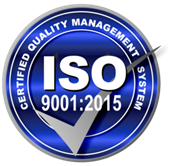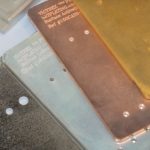
An Expert’s Guide to Plating Carbon Fiber
In the ever-evolving landscape of defense technology, the integration of advanced materials is crucial to enhance efficiency and effectiveness. One such material that holds great promise is electroplated carbon fiber. By harnessing the lightweight yet robust characteristics of carbon fiber, aerospace and defense companies can benefit from improved fuel efficiency, increased payload capacity, and even electromagnetic (EMI) shielding. Additionally, the exceptional corrosion resistance and high strength-to-weight ratio of electroplated carbon fiber ensure durability and longevity. With the right techniques, metalized carbon fiber could be an excellent way to reduce weight while maintaining or increasing EMI-shielding and conductive effectiveness.
Fundamentals of Electroplating Carbon Fiber
To electroplate carbon fiber, the process typically involves specialized surface preparation to ensure plating adhesion. After surface preparation, the plating process requires setting up an electroplating system with carbon fiber as the cathode and anode made of the desired plating metal, immersion in an electrolyte solution, and the application of direct current to deposit metal onto the carbon fiber. Post-treatments like rinsing, drying, and curing may follow to enhance durability and adhesion, along with additional finishing processes. Electroplating carbon fiber can be complex depending on the part’s requirements. In some cases, specialized techniques and formulations yield optimal results due to its conductivity and adhesion challenges.
Advantages of Carbon Fiber Substrates
Carbon fiber substrates offer significant advantages in various industries. Their exceptional strength-to-weight ratio allows for lightweight yet structurally rugged components. They exhibit impressive resistance to corrosion and maintain dimensional stability under extreme temperatures. With high electrical conductivity, electroplated carbon fiber can be used for applications in electronics and avionics. The versatility of carbon fiber substrates enables customization to suit diverse manufacturing needs.
Aerospace Applications of Electroplated Carbon Fiber
Within the aerospace industry, electroplated carbon fiber demonstrates its versatility through two notable applications. Firstly, it plays a crucial role in thermal management by incorporating a thin layer of metal through electroplating, thereby enhancing heat dissipation capabilities. This is particularly valuable in aerospace systems such as thermal protection and heat sinks. Secondly, electroplated carbon fiber proves to be an effective solution for electrical grounding and bonding requirements, ensuring optimal electrical conductivity while minimizing the risks of static buildup or interference. Its applications span critical areas in aerospace, including fuel systems and electronic equipment enclosures.
Defense Applications of Electroplated Carbon Fiber
Electroplated carbon fiber plays a crucial role in the defense industry, offering significant advantages for military aircraft, weapons systems, and other equipment. By incorporating electroplated carbon fiber into military applications, such as aircraft components, weaponry, and communications equipment, weight is reduced while structural integrity is maintained, and excellent EMI shielding is achieved. This weight reduction not only improves fuel efficiency and maneuverability, but also enables increased payload capacity. Additionally, the exceptional resistance to corrosion guarantees durability and longevity of defense equipment in demanding and harsh operational environments.
Conclusion
Electroplating carbon fiber can be the path forward for the right applications in the aerospace and defense industry, as well as many others. The inherent properties of carbon fiber are enhanced by the electroplating process and create an attractive substitute for more heavy and dimensionally limited materials. SAT Plating can help companies with everything from R&D to high-volume manufacturing and shipping the finished product. Get in touch with our experts today to discuss your project’s requirements and how SAT can help meet specifications. We support programs with volumes as low as 1,000 parts to well over 1 million parts per year.






